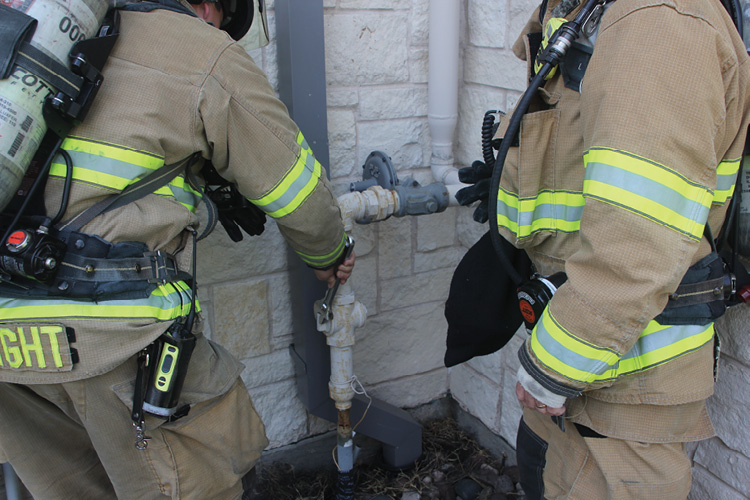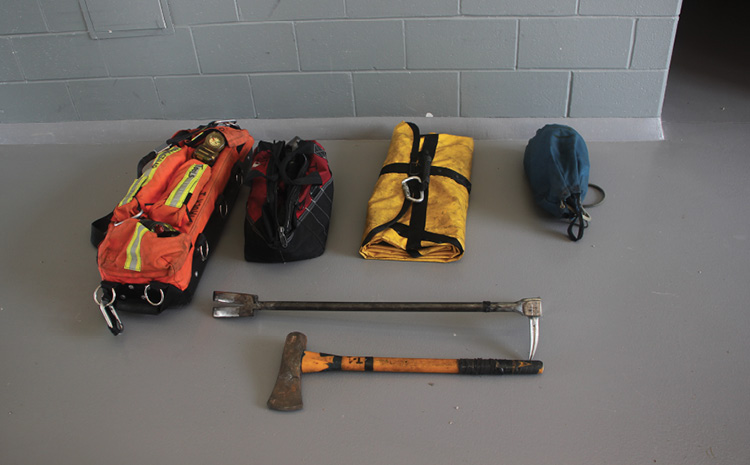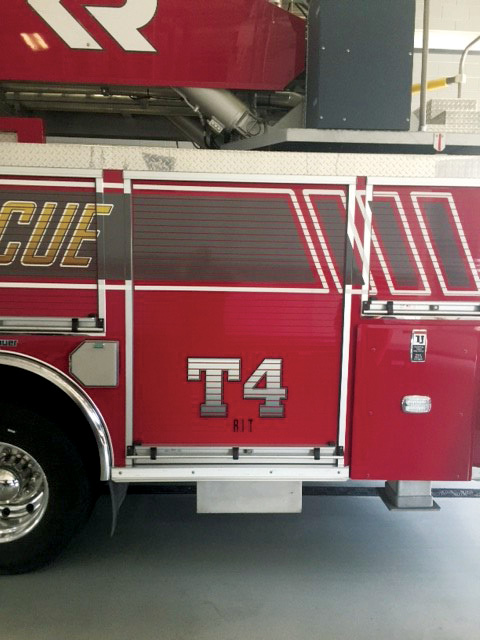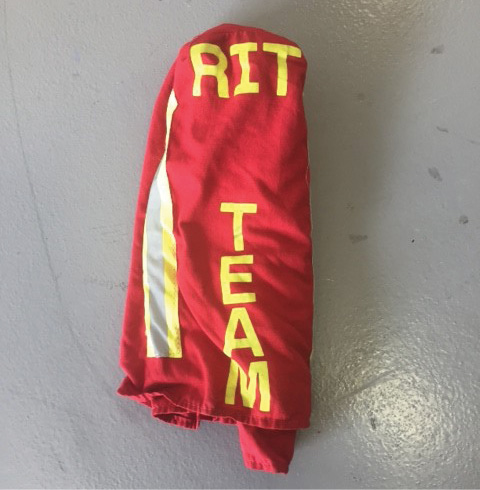
Having an organized, dedicated, and properly trained rapid intervention team (RIT) is one of the most important life safety functions we can commit to on the fireground. This team or group becomes our safety net when things go bad. Whether your local fire department refers to this special assignment as a RIT, a rapid intervention crew, or a firefighter assist and search team, the desired result is that all companies operating at the fire scene recognize and understand its purpose—saving our own. We typically think of rapid intervention as it relates to structure fires, but it can apply to any emergency condition we encounter including hazmat and special rescue. Many fire departments across the country—including my department, Plano (TX) Fire-Rescue—use the term RIT. That is how I will refer to it for this discussion.

(1) Photos by Robert Hawkins.
RELATED
RIT Communications, Activities, and Deployments at Structural Fires
Recently, our Training Section asked our company officers to review and prepare for a series of rapid intervention/Mayday drills. We were asked to train at the station level first and to follow up with more extensive multicompany drills at a later date. During this training process with my crew, I realized that many words beginning with the letter “R” applied to rapid intervention. This list is not all inclusive; many more words can be added. The list includes the following: roles, responsibilities, review, recon, role-playing, rescue, recommended, required, response, removal, ready/readiness, regular, resources, reinforce, resourceful. These words are italicized in this article for emphasis.

RIT: An Important Assignment
When given the assignment of RIT at a “working” incident, it’s extremely important that we know and understand the roles and responsibilities that go with this job. Unfortunately, many firefighters view this assignment as boring because they are not actively involved in the action inside or possibly on the roof. Let’s face it, no firefighter wants to be on standby in the front yard. This can be frustrating at times, but it’s one area we must embrace with the proper attitude. Those crews operating inside and outside the “hot” zone are depending on the RIT to be there when crisis hits. Officers must frequently take the time to review and train with their crews on rapid intervention and stress its importance.
Getting Started
To get the process started, the RIT officer gathers his company and the designated RIT equipment and sets up a tool cache in a strategic location for deployment and use (photo 1). This location is often in the front yard, off to the side and out of the way, on a typical house fire. For a high-rise, the location is normally two floors below the fire floor. One suggestion is to dedicate a specific apparatus and location for all primary RIT equipment. Make it visible and easy to retrieve for all responders (photo 2). Many fire departments choose to have the RIT assignment predetermined in their response matrix. An example might be the third engine or second truck that arrives on scene. It’s a good idea to allow for flexibility in the RIT response, as conditions can rapidly change.
On Scene
After checking in with incident command, the RIT officer should conduct a 360° recon of the structure being attacked by fire to make judgments about how to “soften the structure.” Examples include setting ladders to exterior windows or the roof for possible rescue, controlling utilities by turning off gas supplies or electricity at the meter, and even adding additional scene lighting (photo 3). This information, any actions taken, and any obvious safety concerns identified must be communicated to incident command. I cannot emphasize enough that a RIT should remain uncommitted; it should not be given any other task that would interfere with its primary assignment.
Maintaining a state of readiness is paramount. Full personal protective equipment and self-contained breathing apparatus (SCBA) are mandatory. Using RIT SCBA bottle sleeves is an excellent way to help identify the team (photo 4).
If staffing permits, working with a team of two to conduct the 360° recon is always a safer approach, but we all know that’s not always possible for many fire departments. Brief your RIT crew on what has been done so far; where companies are currently operating; and any changes in conditions, including changes in the Incident Action Plan (IAP).

Staffing
How your department chooses to staff the RIT assignment is flexible, but it must be formally spelled out in your response procedures or guidelines. For example, some fire departments will make a mobile intensive care unit/ambulance crew part of the initial RIT (IRIT) followed by a full engine, truck, or squad company as the permanent assignment. The goal is to have two-in/two-out capabilities before entering immediately dangerous to life or health conditions. Some situations may call for more than one RIT because of the size or complexity of the incident. If a situation calls for activation and deployment of the RIT, the IAP must be changed because this generally means that the RIT has become a Rescue Group. The Rescue Group is often made up of a recon team and a removal/extrication team.
Once those companies are working to locate firefighters in danger, you must backfill and replace the original RIT, which leads us to resources. If the RIT is activated, it is common practice to strike a second alarm to get more help coming. These resources may come from your local fire department or from neighboring fire departments in the form of mutual aid, including volunteers in some cases. Either way, have a plan in place and formalize it in writing so everybody knows the game plan.
Two-In/Two-Out
Having a dedicated RIT with two-in/two-out capabilities is recommended by National Fire Protection Association (NFPA) 1500™, Standard on Fire Department Occupational Safety, Health, and Wellness Program, and NFPA 1561, Standard on Emergency Services Incident Management System and Command Safety, and required by Occupational Safety and Health Administration’s 29 CFR 1910.134, “Respiratory Protection.”
Readiness
Are your firefighters ready to fill the role of a RIT? To be really sure means you have to engage in RIT training on a regular basis. At minimum, you should practice your RIT skills mentally and physically at the company level at least monthly and departmentwide annually. One good method to reinforce training on RIT is through the process of role-playing followed by hands-on drills. Develop monthly scenarios, and get your crew involved with problem solving the rescue potential. It is recommended that you use NFPA 1407, Standard for Training Fire Service Rapid Intervention Crews, as a guide to help prepare and train your firefighters in life-saving techniques as related to rapid intervention. You must be vigilant at maintaining a state of readiness for that day when our firefighters need help.
Having a dedicated RIT at all working incidents requires a financial commitment to purchase some extra equipment above and beyond normal inventories carried on apparatus. This can be a challenge for many fire departments with tight budgets including volunteer organizations. The key is to be resourceful in your purchasing and deployment of RIT equipment and personnel.

Develop plans for sharing of equipment by companies on scene and look for alternative places to buy items for cost savings. Local hardware or big-box retailers may offer basic tools and carrying devices to make up a good RIT cache. Be creative!
Rapid intervention has been a high-priority topic in recent years, and that’s a good thing. Our fire departments must be staffed and ready to go when firefighters get into trouble and the RIT gets pressed into action. It will be difficult in these stressful situations, but focusing on the R’s may help save one of our own.
Les Ruble is a 28-year veteran of the fire service and a battalion chief with Plano (TX) Fire-Rescue. He began his career as a firefighter in the United States Air Force. He has an associate degree in fire science and is a certified master firefighter with the Texas Commission on Fire Protection.

